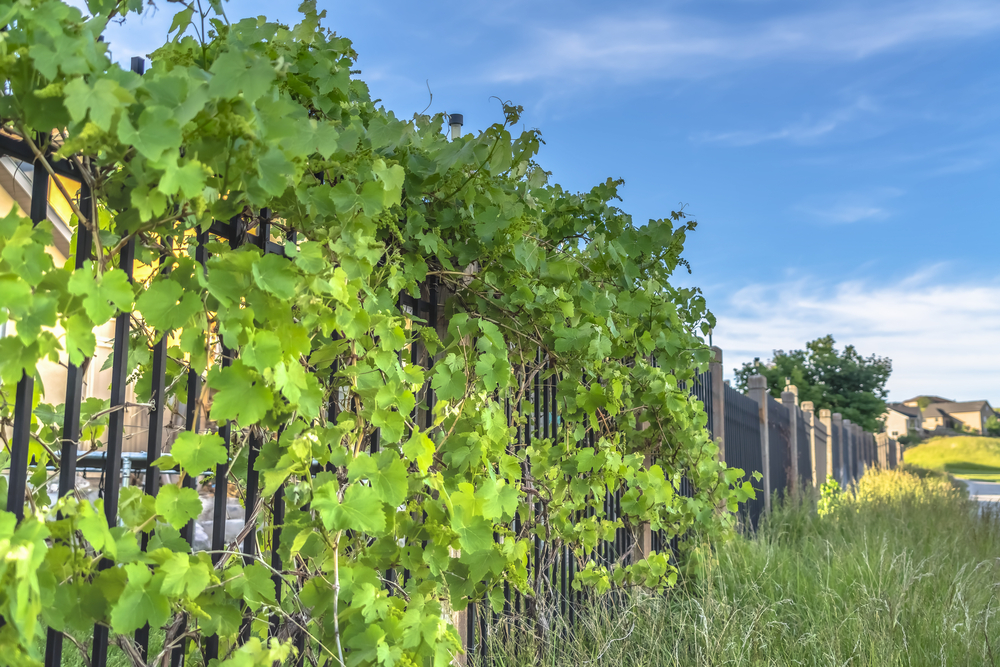All Categories
Featured

Amongst the most preferred choices, timber, plastic, and light weight aluminum each offer special advantages and disadvantages. Right here's a failure of the pros and disadvantages of these three common fencing materials.
Timber Secure Fencing. Timber fence has actually been an ageless selection for property owners because of its all-natural elegance and versatility.
Pros:. Visual Allure: Timber offers a cozy and traditional appearance that enhances a selection of architectural styles. Customizable: It can be painted, stained, or reduce into unique layouts to fit individual preferences. Affordable: Originally, timber secure fencing can be an affordable choice compared to other materials. Eco-Friendly: Timber is a renewable energy and can be sustainably sourced. Cons:. High Maintenance: Timber calls for routine sealing, discoloration, or paint to avoid rot, insect damage, and weathering. Sturdiness Issues: Without correct treatment, timber can warp, split, or decay over time, especially in areas with high humidity. Much shorter Life-span: A timber fence usually lasts 10-20 years, relying on the sort of wood and level of upkeep. Timber is ideal for those who value a conventional appearance and agree to dedicate to its maintenance.
Plastic Fence. Plastic is a modern-day, low-maintenance secure fencing choice that has grown in appeal recently.

Pros:. Reduced Upkeep: Vinyl does not need paint, discoloration, or securing and can be quickly cleaned with soap and water. Climate Resistant: It endures harsh weather without deteriorating, rusting, or bending. Lasting: Vinyl fences can last 20-30 years with marginal upkeep. Selection of Styles: Offered in numerous colors, layouts, and appearances, some plastic alternatives mimic the appearance of wood. Disadvantages:. Greater Upfront Cost: Plastic fencing can be much more costly at first compared to wood. Brittleness in Winter: In extreme chilly, plastic might crack or become brittle. Minimal Fixes: Individual panels can be hard to replace, requiring mindful matching to the existing fencing. Plastic is ideal suited for home owners seeking a durable, low-maintenance option with contemporary looks.
Aluminum Fence. Light weight aluminum secure fencing is a long lasting and lightweight alternative, usually selected for its contemporary look and convenience.
Pros:. Rust-Resistant: Light weight aluminum does not corrosion, making it an outstanding option for humid or wet environments. Reduced Maintenance: Needs marginal upkeep and is simple to tidy. Resilient: While light-weight, light weight aluminum is solid enough to withstand lots of environmental problems. Lengthy Lifespan: Can last numerous decades without considerable wear or damage. Selection of Styles: Supplies a stylish and smooth look, frequently used for decorative or decorative purposes. Disadvantages:. Greater Expense: The first investment for light weight aluminum fence is more than timber or vinyl. Less Privacy: Aluminum fencings are often designed with open pickets, making them much less reliable for privacy. Prone to Damages: Although long lasting, aluminum can be dented by solid influences. Aluminum is suitable for those seeking a trendy, resilient option that requires very little treatment.
Making the Right Choice. Each secure fencing product-- aluminum, vinyl, and timber-- uses distinctive benefits and disadvantages. Your choice needs to depend on your details priorities, such as spending plan, upkeep choices, climate, and visual goals:
If you like a typical look and do not mind normal maintenance,Select wood. Select plastic if you desire a low-maintenance, weather-resistant fencing with modern-day allure. Opt for aluminum if you focus on resilience, corrosion resistance, and a streamlined design. By weighing these pros and cons, you can choose a fencing material that improves your building while satisfying your practical needs.
Latest Posts
Find Brake Repair & More: Full Repair Options from Montclare Auto Repair
Published May 27, 25
1 min read
Reasons Routine Vehicle Maintenance at Montclare Auto Repair Reduces Costs
Published May 27, 25
1 min read
Discover Oil Changes & More: Full Auto Care Solutions from Montclare Auto Repair
Published May 26, 25
1 min read
More
Latest Posts
Find Brake Repair & More: Full Repair Options from Montclare Auto Repair
Published May 27, 25
1 min read
Reasons Routine Vehicle Maintenance at Montclare Auto Repair Reduces Costs
Published May 27, 25
1 min read
Discover Oil Changes & More: Full Auto Care Solutions from Montclare Auto Repair
Published May 26, 25
1 min read